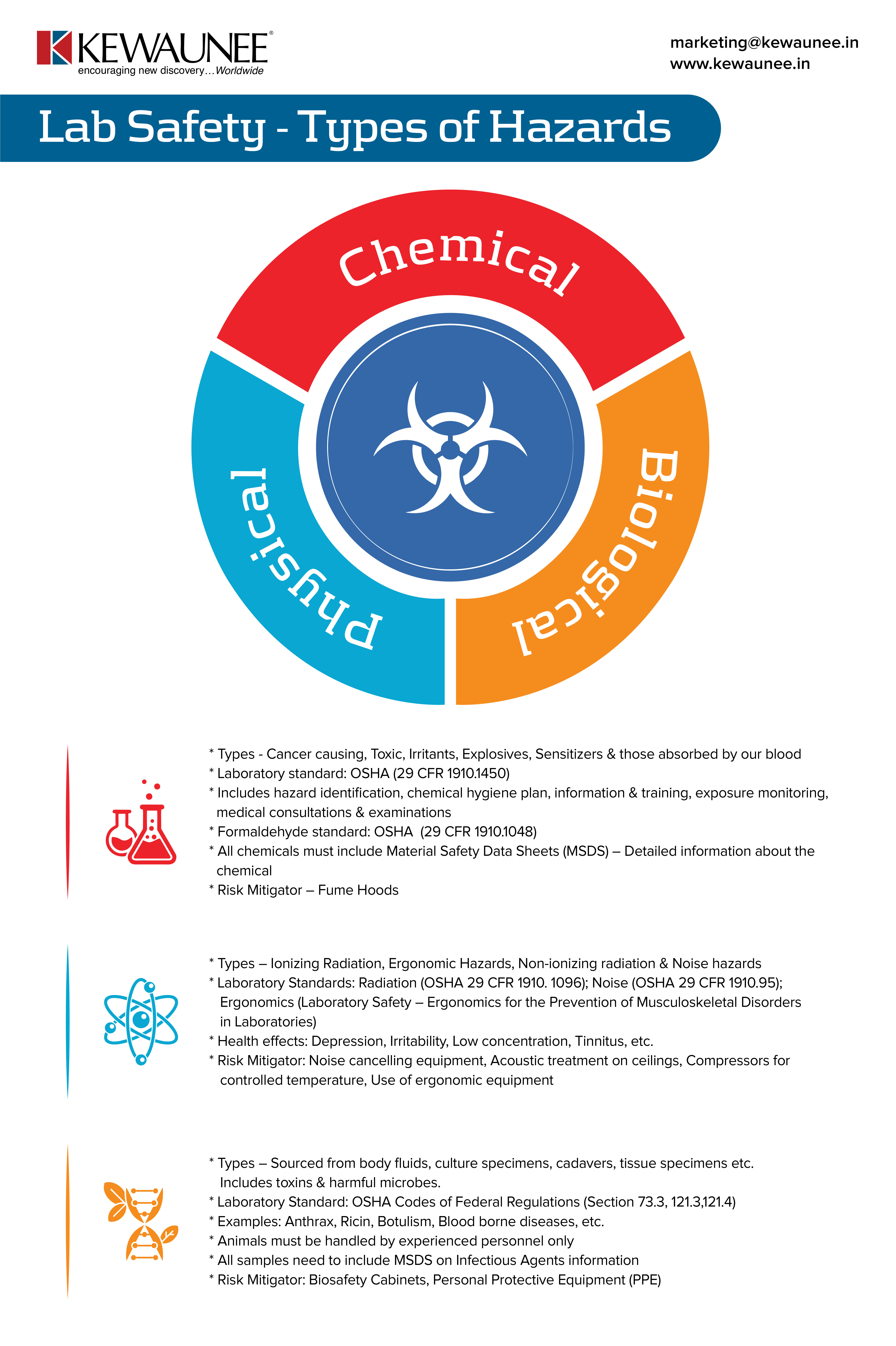Lab Safety – Types of Hazards
Any laboratory personnel would know the number of ways in which they can injure themselves or others. It’s one reason why it’s a key component in the laboratory design and construction process. The Occupational Safety & Health Administration (OSHA) has published one of the most comprehensive and detailed safety regulations on this subject.
The infographic below discusses the various kinds of hazards that we can observe in the laboratory, what they can do to us and what is used to mitigate them.
| Types of Hazards | Information |
| Chemical |
|
| Biological |
|
| Physical |
|
Source: Laboratory Safety Guidance (OSHA), 2011
Comments are closed.











